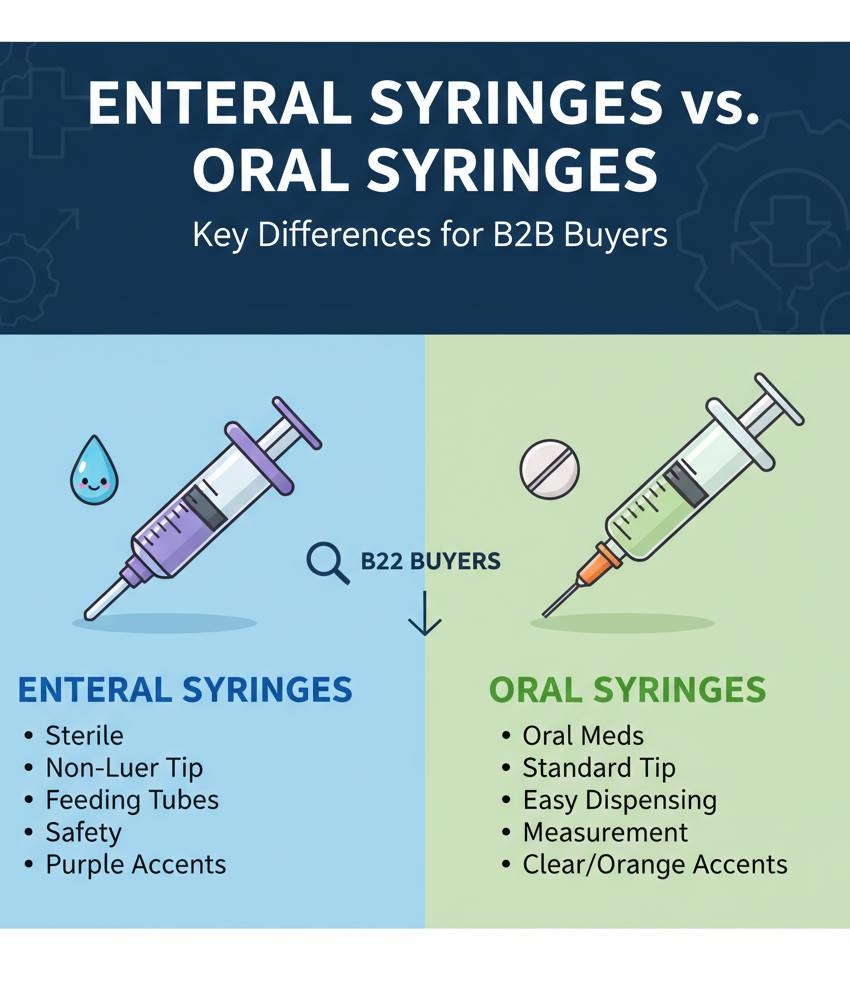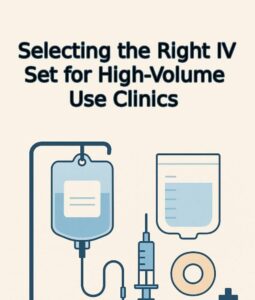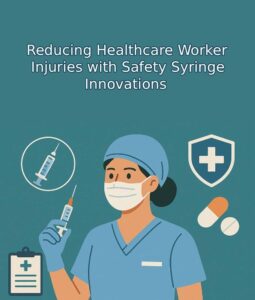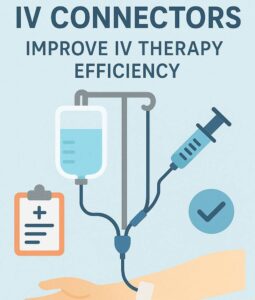When sourcing syringes for medical distribution, understanding the functional and regulatory differences between enteral and oral syringes is essential. Whether you’re a hospital buyer, wholesaler, or private-label reseller, choosing the right enteral syringes supplier, partnering with a certified oral dosing syringe exporter, or working with a reliable medical syringe China factory can make or break your supply chain. This guide breaks down the real-world implications of syringe type selection, materials, design features, and global sourcing strategies that affect cost, safety, and compliance. Know more..
What Are Enteral and Oral Syringes?
At first glance, enteral and oral syringes may appear similar. But for B2B buyers in the medical device industry, the distinctions are critical. Both syringe types deliver liquid medication but serve different purposes, require different tip configurations, and follow separate ISO standards.
Enteral Syringes
- Designed to deliver medication or nutrition directly into the gastrointestinal tract via feeding tubes.
- Luer connectors are intentionally incompatible with IV systems to prevent wrong-route administration.
- Manufactured according to ISO 80369-3 standards (purple color coding is common).
Oral Syringes
- Used to administer medication orally, especially in pediatrics, geriatrics, or veterinary medicine.
- Do not connect to IV or enteral feeding systems.
- Commonly available in amber or clear barrels with easy-to-read scales.
A seasoned enteral syringe supplier or oral dosing syringe exporter will stock both, but for very different use cases and compliance frameworks.
Tip Design and Compatibility
One of the most important safety features of both syringes is the tip type. This affects compatibility, dosing precision, and—most importantly—patient safety.
| Syringe Type | Tip Type | Compatibility | Safety Feature |
| Enteral Syringe | ENFit® | Feeding tubes only | Prevents misconnection with IV lines |
| Oral Syringe | Slip Tip or Oral Tip | Mouth or bottle adapters | Cannot connect to IV or feeding tubes |
Enteral syringe suppliers must ensure ENFit connectors are certified and compliant with ISO standards. Meanwhile, oral dosing syringe exporters must prioritize calibration accuracy and child safety features.
Size Range and Dosing Precision
Medical distributors require a broad range of sizes to meet diverse clinical needs. Here’s how the size variety typically breaks down:
Enteral Syringes
- Sizes: 1 mL to 100 mL
- Common Use Cases: NICU feeding (1–5 mL), adult bolus feeding (60 mL+)
- Additional Features: Reverse-threaded caps, purple coloring for tube feeding
Oral Syringes
- Sizes: 0.5 mL to 20 mL
- Common Use Cases: Pediatric dosing (2–10 mL), veterinary use, home care
- Additional Features: Dosage marks in mL or tsp; amber barrels for light-sensitive drugs
Top medical syringe China factories produce both lines at high volumes and offer OEM customization on size, labeling, and packaging.
Sterility Options and Packaging
Buyers sourcing in bulk must decide between sterile and non-sterile options based on end-use. Here’s what to know:
Enteral Syringes
- Typically individually wrapped and sterile
- Frequently used in hospital environments where contamination risks are high
- May include cap options or luer-lock adapters
Oral Syringes
- Available in sterile (hospital use) and non-sterile (pharmacy or home use) versions
- Often packaged in bulk for repackaging or retail
Leading enteral syringe suppliers can accommodate multiple levels of packaging—blister packs, paper-poly pouches, or peel-off trays—to meet different B2B channel requirements.
Color Coding and Safety
Color differentiation helps reduce medical errors. According to global best practices:
- Enteral syringes are often purple to indicate feeding usage only.
- Oral syringes come in clear, amber, or natural colors for fast visual recognition.
B2B buyers should ensure their oral dosing syringe exporter follows international guidelines to prevent wrong-route administration errors.
Compliance and Certifications
Regulatory compliance isn’t optional. B2B buyers should always verify:
| Compliance Standard | Applies To | Description |
| ISO 80369-3 | Enteral Syringes | ENFit connection standard |
| ISO 7886 | Both | General hypodermic syringes (manual operation) |
| FDA 510(k) | U.S. Import | Required for most Class II devices |
| CE Certification | EU Market | Required for European sales |
A medical syringe China factory with ISO 13485 certification and GMP-compliant manufacturing ensures traceability and production consistency.
Customization for OEM and Private Label
Global demand for private-label products is increasing. Buyers often require:
- Custom logo printing
- Dosing scales in multiple languages
- Unique packaging (hospital kits, single-use packs, bulk packs)
- Child-resistant caps or tamper-evident seals
A flexible oral dosing syringe exporter will offer full OEM support, from mold design to regulatory file preparation.
Global Demand and Market Trends
Over the past decade, demand for enteral syringes and oral syringes has surged due to:
- Rising global birth rates (neonatal feeding)
- Increased chronic disease management at home
- Growth in veterinary care and pet medication delivery
- Pandemic-induced demand for safe, home-use medical devices
Working with a strategic enteral syringe supplier positions buyers to meet these rising needs with scalable, affordable solutions.
Export Challenges for Syringes
Exporting medical syringes involves more than manufacturing. B2B buyers and suppliers face several critical hurdles:
Regulatory Barriers
- Country-specific documentation: health certificates, sterilization logs, CE/FDA certificates
- UDI (Unique Device Identifier) registration
- Language-specific labeling laws
Logistics and Tariffs
- Syringes are lightweight but fragile; bulk packaging must protect calibration marks and prevent contamination
- Many regions impose import duties—buyers should confirm HS codes and request tariff classification in advance
Counterfeit Risks
- Fake syringes in the supply chain are a major threat
- Solutions include holographic labels, anti-tamper closures, and QR code-based authenticity checks
A reputable medical syringe China factory will offer guidance through customs documentation, labeling standards, and distribution logistics.
Selecting the Right Supplier
Choosing the right enteral syringe supplier or oral dosing syringe exporter depends on:
- Compliance: Certifications must be current and valid across your selling regions.
- Scalability: Can they handle high-volume, seasonal, or emergency demand?
- Customization: Will they mold and print to spec?
- Support: Do they offer design consultation, regulatory assistance, and shipping coordination?
- Reputation: Request third-party audits, client testimonials, or trial orders.
Best Practices for B2B Buyers
1. Bundle Orders
Buy both enteral and oral syringes from one medical syringe China factory to reduce shipping and customs costs.
2. Ask for Sterility Validation Reports
Sterilization method (EtO, Gamma, Steam) matters. Documentation must prove 10^-6 sterility assurance level (SAL).
3. Inspect Lot Numbers and Expiry
Traceability is key. Ensure each box includes lot and expiry information for inventory rotation and recall capability.
4. Consider Shelf Life
Most syringes have 3–5 year shelf lives, depending on packaging. Avoid stockpiling more than needed unless price-locked.
5. Don’t Skip Sampling
Request pre-shipment samples for dimensional accuracy, print quality, and user experience testing.
Conclusion: Don’t Confuse Similar Tools with the Same Tool
In the world of medical device sourcing, detail matters. The difference between an enteral syringe supplier and an oral dosing syringe exporter could mean the difference between safety and liability, compliance and fines, or efficiency and delays. Partnering with the right medical syringe China factory means gaining a production ally, a compliance expert, and a logistical problem-solver—all in one.
Whether you’re supplying hospitals, pharmacies, or clinics, understanding the distinctions between enteral and oral syringes gives you the edge. Equip your business with the right tools—and the right partners—to thrive in a competitive, compliance-driven market.






